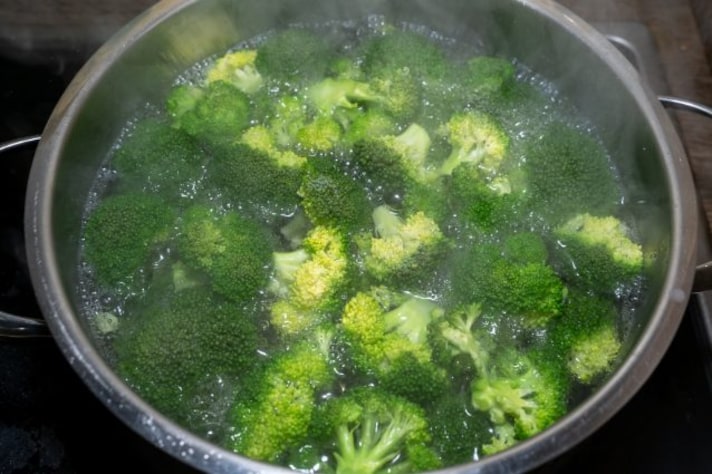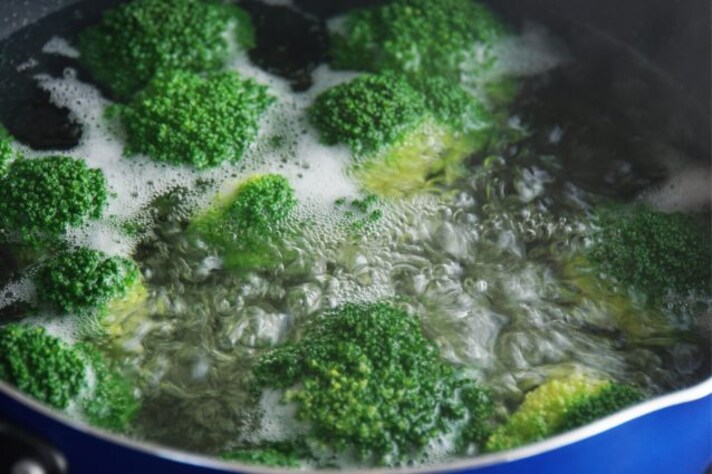
Broccoli is the ultimate redemption story in the world of vegetables. Once the bane of every picky child’s existence, it has clawed its way back into the good graces of adults who now recognize its worth—when cooked correctly, that is. The problem? Too many people are still subjecting this once-maligned vegetable to the absolute worst fate imaginable: boiling. If you’ve ever wondered why your broccoli tastes bland, looks dull, and smells like something that escaped from a science lab, you already know the answer. Boiling is broccoli’s worst enemy, and here’s why you should never do it again.
Goodbye, Vitamins and Minerals
Broccoli is often praised as a powerhouse of nutrients, packed with vitamin C, fiber, and cancer-fighting compounds. But drop it into a pot of boiling water, and you might as well kiss half of those benefits goodbye. Studies have shown that boiling can destroy up to 50% of vitamin C and other water-soluble nutrients in broccoli, flushing them straight down the drain. You wouldn’t take a high-quality multivitamin and then immediately throw half of it in the trash, would you? So why do it with your food?
The Texture Travesty: From Crisp to Catastrophe
If you enjoy eating broccoli with the consistency of baby food, by all means, keep boiling it. But for those of us who appreciate a little bite, boiling is a one-way ticket to disaster. Over time, the high heat breaks down the cell walls, leaving behind limp, waterlogged florets that fall apart at the slightest touch. Broccoli should have a satisfying snap when you bite into it, not disintegrate into a sad, fibrous mush that tastes like disappointment.

The Foul Smell Factor
Boiling broccoli doesn’t just ruin its taste and texture—it also does something much worse. It stinks up your entire kitchen. That unmistakable sulfuric smell, the one that lingers long after you’ve finished eating, comes from compounds called glucosinolates, which release an odor reminiscent of rotten eggs when overcooked. Boiling accelerates this process, creating a smell so aggressive that it might as well come with a warning label. If you’ve ever walked into a kitchen and immediately regretted breathing through your nose, you already know what I’m talking about.
Why Boiled Broccoli Looks So Sad
We eat with our eyes first, and few things are less appetizing than a plate of dull, lifeless green vegetables. Raw broccoli boasts a bright, vibrant color, but once it’s boiled, that beautiful green fades into a lifeless, army-fatigue shade that screams, “I’ve been overcooked.” The worst part? That gorgeous green color is leached into the water—along with all those vitamins—leaving behind a vegetable that looks as if it’s already given up on life.
Say Goodbye to Flavor
Boiling doesn’t just strip broccoli of nutrients and texture—it also robs it of its natural, slightly sweet, earthy flavor. What’s left is a bland, waterlogged mess that no amount of seasoning can fully revive. It’s the reason so many people grew up believing they hated broccoli. In reality, they just hated boiled broccoli. Cook it right, and suddenly, it’s a whole different vegetable.

Better Ways to Cook Broccoli
So, if boiling is off the table, how should you cook broccoli? Fortunately, there are better (and tastier) ways to do it.
- Roasting brings out its natural sweetness with crispy, caramelized edges.
- Steaming keeps it tender without drowning it.
- Sautéing in garlic and olive oil turns it into something restaurant-worthy.
And if you really want to keep things simple? Eat it raw. Any of these methods will give you broccoli that actually tastes like something worth eating—not like a punishment.
;Resize,width=767;)
